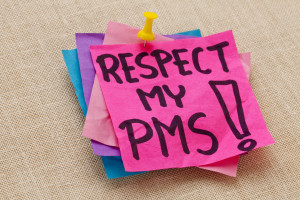By Iris Farrou
28 Feb, 2023
Lifestyle Tips, PMS, Prevention, Procedures, Queer Health, Reproductive health, Sexual health, Women's Health
cysts, Fibroid Cluster, Heavy Periods, Infertility help, MRI, Ovarian, Reproductive system disorders, Symptoms, Ultrasound, Uterine Cancer, Uterine Fibroids, Womens Reproductive Health

If you have a uterus, then you already know there are countless issues to keep in mind and a full maintenance schedule for your uterine health. There is yet another concept to add to your list: uterine fibroids. Ideally, your OBGYN or primary care doctor has already talked to you about these. But if this is the first time you come across this term, fear not–uterine fibroids are extremely common, and 99% of the time they are also harmless. However, that does not mean you should ignore them, or that they don’t contribute their fair share of challenges in your cycle.
What are uterine fibroids and how do I know I have them?
Uterine fibroids, also known as leiomyomas, are quite simple: they are noncancerous growths (or tumors, though that word is admittedly scary) made up of the connective tissue and muscle from the wall of the uterus. They can grow solo, or in a cluster, and are most commonly less than 8 inches in diameter– though they can grow larger. Many people with a uterus do not even realize they have uterine fibroids, unless some of the symptoms start becoming more prominent, or you specifically ask your OBGYN to look for them.
The most common signs of uterine fibroids include heavy menstrual bleeding, periods lasting more than a week, bleeding between your periods, frequent urination or difficulty emptying your bladder–usually resulting in a feeling of heaviness in your lower abdomen–constipation, lower back pain, and even pain during sex. These symptoms are definitely not an exclusive list, and presence of such symptoms does not guarantee the only issue is uterine fibroids: if you have concerns, it is advised that you consult with your doctor so you can know exactly what you are dealing with.
How are they diagnosed and treated?
If you are concerned about the presence of uterine fibroids, you can ask to have an ultrasound done to determine the presence of uterine fibroids. The ultrasound can be transabdominal, and/or be done inside your vagina to get pictures of the uterus. Your doctor may also order blood count tests to determine if you have anemia from chronic blood loss, and to rule out other bleeding disorders. If these methods do not yield satisfactory results, there are more in depth tests that your OBGYN can order, such as an MRI, hysterosonography, or hysteroscopy.
Since uterine fibroids are benign, the recommended treatment–as long as they are not causing significant issues in your day to day life and do not interfere with your fertility–is to keep an eye on them. They rarely grow and do not tend to interfere with fertility and/or pregnancy, and also tend to shrink after menopause. There are possible medications that your doctor may prescribe, medication which control your hormone levels to create menopause-like conditions. This tricks the fibroids into thinking your body has entered menopause, and causes them to shrink along with their unpleasant effects (such as heavy bleeding). Though there are procedures available as well, this is a step you would discuss at length with your doctor.
https://www.mayoclinic.org/diseases-conditions/uterine-fibroids/diagnosis-treatment/drc-20354294
https://my.clevelandclinic.org/health/diseases/9130-uterine-fibroids#diagnosis-and-tests
More
 Most women who have handled a box of tampons have come across the words “toxic shock syndrome” (TSS) without spending much time contemplating tampon safety. This rare, but potentially life-threatening, condition is caused by bacterial infections, mainly the Staphylococcus Aureus or the Streptococcus bacteria. TSS is mostly associated with the use of tampons as it is thought that the bacteria thrive in the presence of a super-absorbent tampon. Possible symptoms include high fever, rash on the palms and soles, low blood pressure, vomiting or diarrhea, muscle aches, headaches, disorientation, and redness of the mouth, throat and eyes.
Most women who have handled a box of tampons have come across the words “toxic shock syndrome” (TSS) without spending much time contemplating tampon safety. This rare, but potentially life-threatening, condition is caused by bacterial infections, mainly the Staphylococcus Aureus or the Streptococcus bacteria. TSS is mostly associated with the use of tampons as it is thought that the bacteria thrive in the presence of a super-absorbent tampon. Possible symptoms include high fever, rash on the palms and soles, low blood pressure, vomiting or diarrhea, muscle aches, headaches, disorientation, and redness of the mouth, throat and eyes.
Although TSS can affect anyone, most cases caused by the Staphylococcus bacteria occur in women of menstruating age, followed by cases occurring in older women, children, and men. As far as tampon use is concerned, use of super-absorbent tampons, as well as use of tampons when there is low blood flow, may be increasing the risk of TSS.
To reduce the risks of TSS, focus on these tampon safety tips:
- Change tampons every few hours
- Avoid tampons with applicators, as they increase the danger of scraping the vaginal walls
- Be gentle when inserting and/or removing tampons
- Avoid using tampons overnight or when the flow is light
- Maintain personal hygiene during your period and thoroughly wash your hands before and after handling tampons
- Use tampon immediately after unwrapping and avoid handling more than necessary
- Do not use tampons if you are not on your period
In addition to TSS, tampons can also expire. Some companies may provide an expiry date on the tampon boxes, but that may not always represent the life cycle of the tampons. You may hear that the shelf life of a tampon is about five years, but this comes with certain requirements.
To be safe when using tampons, consider the following:
- Tampons are sanitary, but not sterile
- If there’s no expiration date, write the purchase date on the box
- Always keep tampons in their original packaging and away from excessive moisture, as this reduces the risk of contamination
- The bathroom is NOT the best place to store your tampons: find a cabinet that’s cool and dry
- Don’t let tampons loose in your purse—to avoid ripping the packaging store tampons in a small bag or pouch
- Remember that debris, dust, dirt, and/or mold are not always visible; if the packaging has been ripped or if you have stored tampons in less-than-ideal conditions, it is best to not use them
- Do not use a tampon if there’s noticeable discoloration, mold patches and/or odor
More
That Time of the Month Doesn’t Have to Be Horrible
 It comes on every month like clockwork. The moodiness, the bloating, the cramps. It’s a miserable cycle that can disrupt work, your family life, and even your personal relationships. Premenstrual Syndrome (PMS), or the combination of symptoms that some women suffer about one week before their period, doesn’t have to disrupt your life. Today, our doctors are offering tips and advice for easing the symptoms of PMS, and reclaiming your life.
It comes on every month like clockwork. The moodiness, the bloating, the cramps. It’s a miserable cycle that can disrupt work, your family life, and even your personal relationships. Premenstrual Syndrome (PMS), or the combination of symptoms that some women suffer about one week before their period, doesn’t have to disrupt your life. Today, our doctors are offering tips and advice for easing the symptoms of PMS, and reclaiming your life.
What Causes PMS?
Changes in hormones associated with the menstrual cycle are the underlying cause of PMS symptoms.
Signs and Symptoms of PMS
Symptoms vary widely on a per woman basis, but may include: acne, tender breasts, fatigue, difficulty sleeping, upset stomach, bloating, headache, backache, food cravings, muscle or joint pain, mood swings, anxiety, or depression. What follows are a variety of options for easing these disruptive symptoms. If you have any questions about the techniques best for you, talk to your OBGYN.
Improve Your Diet
You should aim to eat well-balanced meals every day, but it’s even more important during the days preceding your period. Reduce the amount of carbs you eat (regardless of what you’re craving), and increase your protein, fruits, vegetables, and whole grains. Also, reduce your consumption of processed foods and sugar. In addition, salt can cause bloating, caffeine can increase anxiety, and alcohol may exacerbate feelings of depression. A healthy diet will help stabilize insulin levels to minimize hormonal shifts. Remember to also eat regular meals and snacks to reduce severe spikes in blood sugar levels.
Get Enough Sleep
Being overtired certainly won’t help your PMS symptoms. Make sure to get 7 to 9 hours of sleep per night. Lack of sleep could exacerbate your moodiness, or cause you to make poor diet decisions.
Exercise
Regular cardio will increase the endorphins that naturally tend to drop in the second half of your menstrual cycle, leading to mood swings and depression. Exercise also boosts your lymph system’s cleaning actions, ridding your body of toxins and excess hormones. It also increases your metabolic rate, which burns fat for energy, and helps establish a healthier hormonal balance.
Herbal Remedies
Herbal remedies are available that can help to regulate shifting hormones and minimize mood swings and cramps. Herbal options may include black cohosh, chasteberry, evening primrose oil, ginger, raspberry leaf, dandelion, or natural progesterone creams.
Take a Multivitamin
For some women, a multivitamin can help to restore balance to the body, especially when taken in conjunction with a healthy diet. An ideal multivitamin will include omega-3s, vitamins B, E and D, calcium, and magnesium.
Take NSAIDs for Pain
If back, muscle, and joint pen, or breast tenderness are severe, talk to your doctor about taking a nonsteroidal anti-inflammatory plain reliever (NSAID), such as ibuprofen or naproxen. Over-the-counter PMS medications such as Midol and Pamprin may be effective as well.
Consider Birth Control
If you’re not already utilizing an oral contraceptive, talk to your OBGYN about the benefits of taking a low-dose birth control pill to help regulate hormones and ease PMS symptoms.
Minimize Stress
This may seem like the hardest bit of advice; after all, how can one truly minimize the stress of work, family, social obligations, and community service? Still, making a conscious effort to reduce spikes of stress hormones can improve how you feel during those difficult days before your period arrives. Try deep breathing exercises, yoga, massage, meditation, and any other soothing activity that can help to re-center your body, mind, and soul.
Talk to Your OB-Gyn
That time of the month doesn’t have to be painful. Some women can experience severe PMS symptoms, but you don’t have to suffer in silence. Make an appointment to discuss your PMS with your OB-Gyn. He or she can suggest the best course of action to help you feel better.
Looking for a new Ob-Gyn? We are currently accepting new patients at all of our WNY locations. Call for an appointment today. We look forward to meeting you!
More
 Eighty-five percent of women experience the discomfort of premenstrual syndrome (PMS) every month. If you are among those who suffer with such symptoms as cramps, bloating, and mood swings prior to the onset of your period, take comfort in knowing that there are many natural, and healthy ways to manage the symptoms of PMS. Consider the list below of eight tips for managing PMS.
Eighty-five percent of women experience the discomfort of premenstrual syndrome (PMS) every month. If you are among those who suffer with such symptoms as cramps, bloating, and mood swings prior to the onset of your period, take comfort in knowing that there are many natural, and healthy ways to manage the symptoms of PMS. Consider the list below of eight tips for managing PMS.
- Get moving. While you may be tempted to stay in bed until your PMS symptoms improve, being active may actually help you feel better. Many women find that 30 minutes or more of cardiovascular exercise helps to specifically ease feelings of sadness and anxiety that they experience during their periods.
- Eat healthfully. It is particularly important in the days directly proceeding your period to increase your consumption of fruits, vegetables, and whole grains while reducing the amount of sugar, artificial sweeteners, salt, and fat that you consume. The complex carbohydrates in whole grains, in particular, have been shown to enhance your mood. Researchers have also found that an increase in certain fatty acids, like the omega-3s, can lessen irritability and reduce pain and discomfort.
- Reduce alcohol. Reduce the amount of alcohol that you consume premenstrually. Alcohol is a depressant, which can enhance your mood swings, increase your anxiety, and feelings of depression or sadness.
- Limit caffeine. Reduce the amount of caffeine that you consume prior to the beginning of your period. Research has shown that the effects of caffeine are magnified premenstrually, leading to greater breast tenderness, more nervousness, and potentially more irritability. Aside from your morning cup of coffee, consider limiting the amount of caffeine that you consume from tea, cocoa, and chocolate as well. If you miss your warm morning beverage, switch to naturally caffeine-free chamomile tea, which contains properties that relieve muscle spasms, and may therefore help reduce the severity of menstrual cramps.
- Get enough sleep. If you are among the many women who lose sleep due to their monthly hormonal shifts, you may wake up on premenstrual days feeling irritable and moody. Try to get at least seven to nine hours of sleep on the days proceeding your period. If you are struggling to get solid hours of sleep at night, consider a short nap during the day.
- If you are a smoker – quit. Not that you needed another reason to crush this bad habit, but if you are a smoker that experiences painful and discomforting PMS symptoms, know that your smoking habit could be making your symptoms worse. A study of more than 3,000 women showed that those who smoked were more than twice as likely to develop moderate or severe PMS symptoms than those who never smoked.
- Manage your stress. If the most uncomfortable PMS symptom that you experience is an increase in feelings of stress and anxiety, consider finding healthy ways to combat these feelings through such practices as yoga, meditation, acupuncture, massage, or even simple deep breathing exercises.
- Increase your calcium. Supplement your diet during your period with extra calcium. Adding a daily dose of 1200 milligrams of calcium has been shown to ease PMS symptoms for many women.
More




